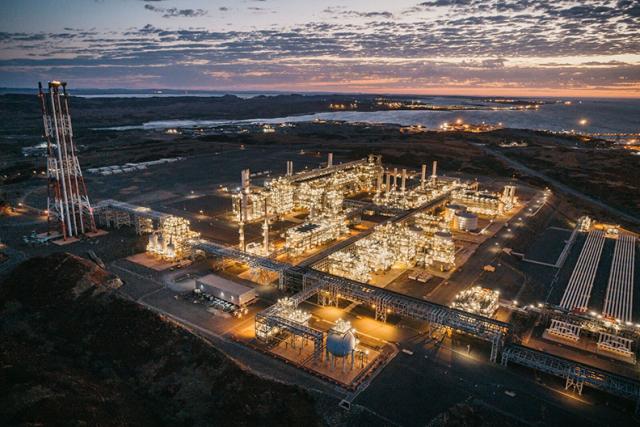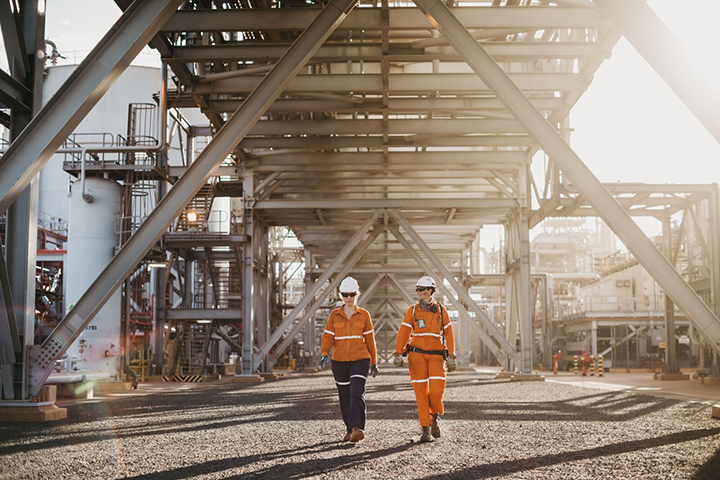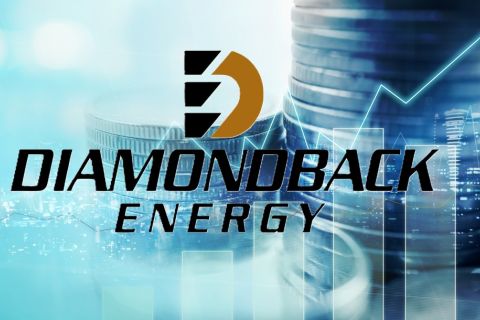
ABERDEEN—Like most oil and gas majors, Australia’s Woodside Energy is grappling with how best to harness the myriad of opportunities presented to the oil and gas sector by artificial intelligence (AI). Unlike some, however, Woodside has some projects underway that are already delivering significant results.
One of the people charged with overseeing this transition is Alison Barnes, head of robotics. She is tasked with leading the efforts to incorporate the use of intelligence systems on Woodside’s new assets that are currently being designed at various engineering houses around the world. For the role, Barnes leans heavily on her background as an instrumentation and controls engineer.

“I lived up in Karratha, in northwest Australia for several years, working on LNG plants and supporting our gas assets,” she says. “I was then moved from production into technology to head up the robotics lab, and now I get to execute the executive’s vision for using digital technologies.”
What Can AI Do For Us?
There are many interpretations of what AI entails, but Barnes likes to define it as the ability to mimic human intelligence and/or behavior.
“Many of the examples are familiar in our daily life, and a lot of what the industry is applying is still very much in that narrow band isolated to specific parameters and context,” she said. “The key is obviously moving past all the hype and making it useful and applicable. We have all seen the shiny brochures, the presentation packs, the emotive news articles, but hopefully, some, like me, have had a chance to play with this technology.”
Woodside already uses AI in many business processes, much of this in collaboration with the IBM Watson deep learning artificial intelligence platforms. “In implementing several Watson systems, we discovered that we needed a system that could work across and outside them. Sometimes, it may not be clear which system holds the information we need, or related information lives in several systems,” Barnes said.
This led to Woodside developing its own cognitive assistant, Willow. “Our data science team also works directly with asset engineering and operations to build a range of statistical and analytics tools, using live streaming data from our facilities,” Barnes said. The Maximum Possible Production tool Pluto LNG uses to compare current and historical performance is in use to maximize daily production.
The Maximum Possible Production tool runs every 10 minutes and creates a model that looks at all the uncontrollable variables and compares them to the last time that they came together in that way. With this data, it advises the operator what they can do with all the controllable variables. Woodside also have a surveillance hub for engineers, which collects data from thousands of tags in the plant so that they can monitor and look at specific plant and processes so that they can improve maintenance reference plans and better monitor equipment performance.
RELATED:
- Potential Of AI-powered Directional Drilling
- AI Adoption Is Accelerating In The Energy Sector
- Physics-based Or Data-driven Models?
Adding Intelligence To Pluto LNG
One AI project that Barnes and her team are currently working on is also at the Pluto LNG facility in northwest Australia and is focused on intelligent edge assets. Woodside has operated the Pluto LNG facility since startup in 2012. Gas from the offshore Pluto and Xena fields is piped through a 180-km pipeline to Pluto LNG’s single onshore LNG processing train located on the Burrup Peninsula, near Karratha in Western Australia.
“The project has moved past proof of concept and pilot trial, but it is still very much a working piece,” Barnes said. “Our goal is to build this intelligent asset. We want to install a data-driven digital nerve system at the heart of our operating facilities to capture, analyze and make use of all the available data. Ultimately this will enable better decision making. Our tagline for the project is to make things work harder, so people can work smarter.”
When it came to naming the AI system, the team kept coming back to precisely what they were hoping to achieve, which was to integrate all the data into one holistic view.
“We all agreed to name it Fuse,” Barnes said. “What we are working on is fusing technologies and data to create these intelligent assets.”

A New Breed Of Technology
The essence of Fuse is to use existing data from the site and integrate this with a host of new data that is made available by installing a new breed of smart sensors. This is all combined with what Barnes calls a new breed of technology such as networks, visualization tools, data science and robotics, which when combined, provides continuous feedback of data that learns over time.
“It is still a work in progress, but part of the vision is to create a tool that provides better than human awareness,” Barnes explained. “I want someone to feel like they can use this tool to look at a piece of equipment and get more information than they could if they got on a plane up to Karratha, put on their PPE, went out in a helicopter and stood in front of the piece of equipment themselves. That is a challenging thing to do, especially having worked in operational sites myself.”
As to how Woodside is going about achieving this lofty ambition, it is a combination of deploying the best technology available and integrating that with their own proprietary innovation that fills the gaps the company felt are in the market.
“We are integrating existing plants, sensors, and data,” Barnes said. “But then we have also had to deploy 100s of additional sensors to get the data that we required.”
Gap In The Market
When Woodside analyzed what was available in the market, they found that the best that was on offer did not fit the requirements. The sensors were either too expensive or too complex to integrate and required specialist skills. The team’s response was to prototype, develop, build and certify their own sensors.
“Hopefully there will be new IoT sensors in the market which we can utilize in the future as we have no desire to become a sensor company,” Barnes said. “But in the meantime, it’s helping us achieve our goal.”
The development of these smart sensors created another, not an unexpected problem for Woodside. The sheer volume of additional data to manage. “We had all this additional data that we never had before,” Barnes explained. “It was too much for operations to monitor. That is where we deployed analytics tools and data science to process and understand it.
“We have got a camera that has a view of a gauge somewhere in its vision, we can digitize the reading, look at it over time and more excitingly, look at it compared to other pumps, because everything’s now connected. Our algorithm can learn what is normal, and then start to alert you when it sees a case that is not and then offer some insight or action as to what you should do.”
More To Come From AI
For Woodside this is just the start of the journey. The next step is to visualize that data and create what they dubbed a version of a 4-D digital twin that was spatially referenced: a virtual replica of the site with embedded real-time data analytics.
“When we are solving problems, I think it is fascinating because we can now better enable the collective wisdom and collaboration of many,” Barnes concluded. “We can even draw on those different assets and different points of time if we get it right.
“I think the best way to succeed is to start and try it. We need to think big, start small, and scale fast. We are taking a very hands-on approach to assess the usefulness of each technology. We need to work with our people to identify where best to employ the technology and bring those who have the technical expertise on board to change the discussion and show us how we could do things differently. We must be critical about their usefulness, and mindful to changes to people’s roles and the skills required. And we’re going to need to collaborate within and across sectors.”
Recommended Reading
Hess Corp. Boosts Bakken Output, Drilling Ahead of Chevron Merger
2024-01-31 - Hess Corp. increased its drilling activity and output from the Bakken play of North Dakota during the fourth quarter, the E&P reported in its latest earnings.
Petrie Partners: A Small Wonder
2024-02-01 - Petrie Partners may not be the biggest or flashiest investment bank on the block, but after over two decades, its executives have been around the block more than most.
CEO: Coterra ‘Deeply Curious’ on M&A Amid E&P Consolidation Wave
2024-02-26 - Coterra Energy has yet to get in on the large-scale M&A wave sweeping across the Lower 48—but CEO Tom Jorden said Coterra is keeping an eye on acquisition opportunities.
CEO: Magnolia Hunting Giddings Bolt-ons that ‘Pack a Punch’ in ‘24
2024-02-16 - Magnolia Oil & Gas plans to boost production volumes in the single digits this year, with the majority of the growth coming from the Giddings Field.
Endeavor Integration Brings Capital Efficiency, Durability to Diamondback
2024-02-22 - The combined Diamondback-Endeavor deal is expected to realize $3 billion in synergies and have 12 years of sub-$40/bbl breakeven inventory.






